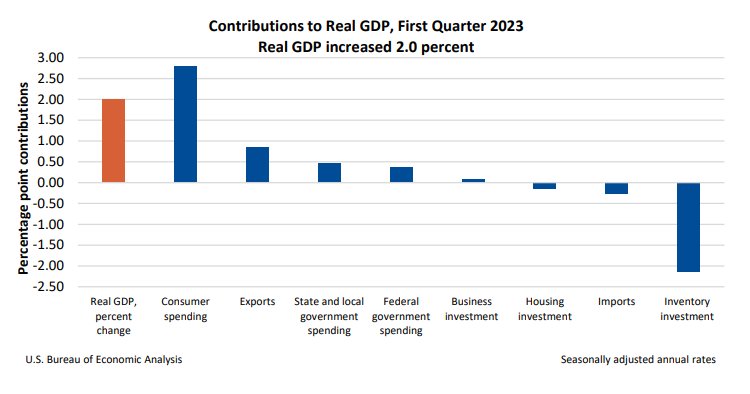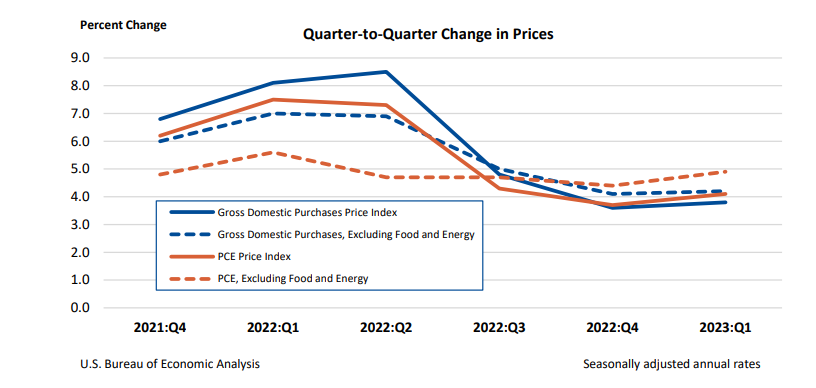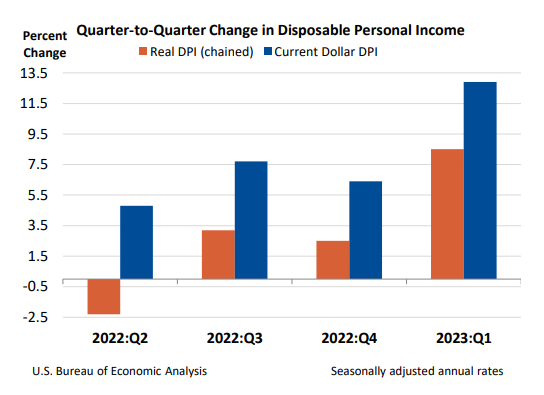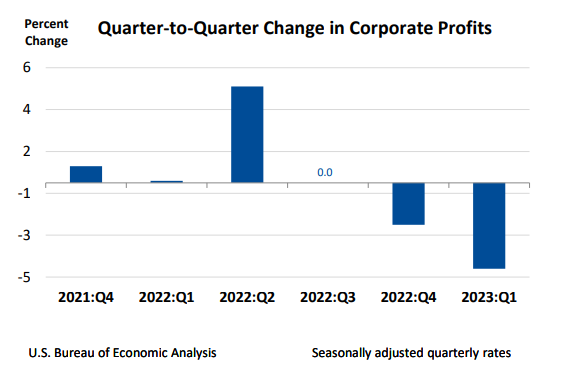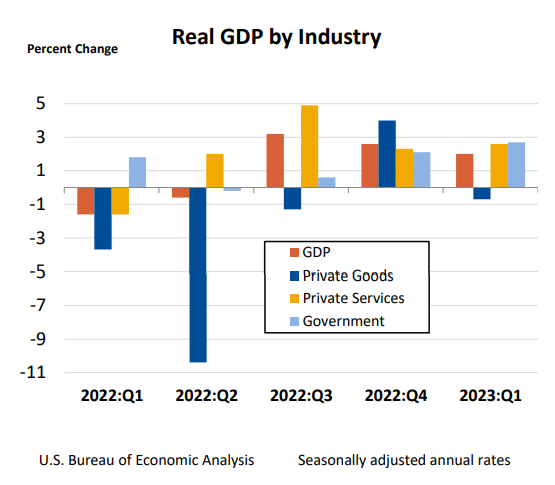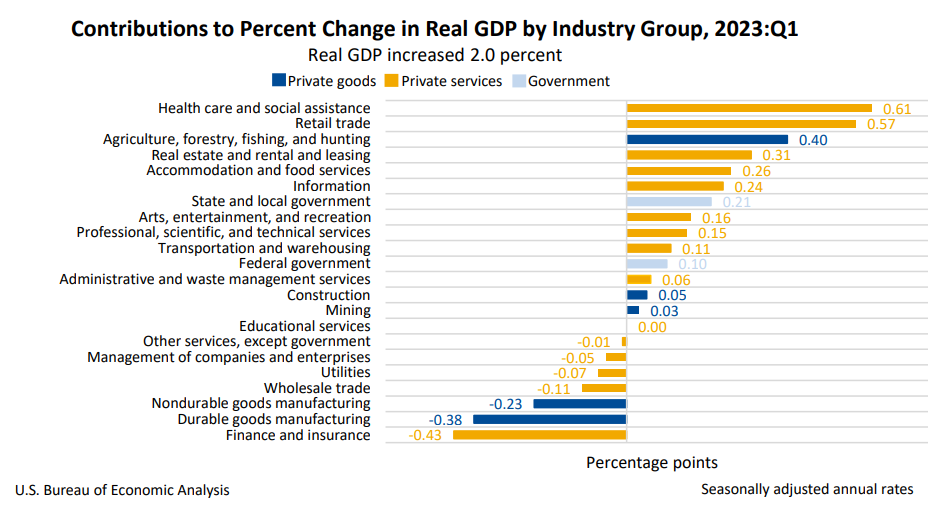Real gross domestic product (GDP) increased at an annual rate of 2.0 percent in the first quarter of 2023, according to the “third” estimate. In the fourth quarter of 2022, real GDP increased 2.6 percent. The GDP estimate for the first quarter was revised up 0.7 percentage point from the “second” estimate, primarily reflecting upward revisions to exports and consumer spending.
The increase in the first quarter primarily reflected an increase in consumer spending that was partly offset by a decrease in inventory investment.
- The increase in consumer spending reflected increases in both goods (led by motor vehicles and parts) and services (led by health care, food services and accommodations, and “other” services).
- The decrease in inventory investment primarily reflected decreases in wholesale trade and manufacturing. Compared to the fourth quarter, the deceleration in real GDP primarily reflected a downturn in inventory investment and a slowdown in business investment. These movements were partly offset by an acceleration in consumer spending, an upturn in exports, and a smaller decrease in housing investment. Imports turned up.
Prices
Gross domestic purchases prices, the prices of goods and services purchased by U.S. residents, increased 3.8 percent in the first quarter after increasing 3.6 percent in the fourth quarter. Excluding food and energy, prices increased 4.2 percent in the first quarter after increasing 4.1 percent.
Personal consumption expenditures (PCE) prices increased 4.1 percent in the first quarter after increasing 3.7 percent in the fourth quarter. Excluding food and energy, the PCE “core” price index increased 4.9 percent in the first quarter after increasing 4.4 percent.
Personal income and saving
Real disposable personal income — personal income adjusted for taxes and inflation—increased 8.5 percent in the first quarter after increasing 2.5 percent in the fourth quarter.
Current-dollar DPI increased 12.9 percent in the first quarter, following an increase of 6.4 percent in the fourth quarter. The increase in the first quarter primarily reflected increases in compensation and personal current transfer receipts as well as a decrease in personal current taxes, which are a subtraction in the calculation of DPI.
Personal saving as a percentage of DPI was 4.3 percent in the first quarter, compared with 3.4 percent in the fourth quarter.
Corporate profits from current production
Profits decreased 4.1 percent at a quarterly rate in the first quarter after decreasing 2.0 percent in the fourth quarter.
- Profits of domestic financial corporations decreased 2.3 percent after decreasing 12.8 percent.
- Profits of domestic nonfinancial corporations decreased 5.0 percent after decreasing 1.1 percent.
- Profits from the rest of the world (net) decreased 2.0 percent after increasing 4.8 percent.
Corporate profits decreased 1.8 percent in the first quarter from one year ago.
Updates to GDP
The update from the “second” estimate primarily reflected upward revisions to exports and consumer spending that were partly offset by downward revisions to business investment and federal government spending. Imports were revised down.
For additional details on the estimates, refer to the Technical Note.
Real gross domestic product by industry
In the first quarter, the value added of private services-producing industries increased 2.6 percent, government increased 2.7 percent, and private goods-producing industries decreased 0.7 percent. Overall, 15 of 22 industry groups contributed to the first-quarter increase in real GDP.
- Within private services-producing industries, the increase was led by health care and social assistance, retail trade, real estate and rental and leasing, and accommodation and food services. Partly offsetting these increases was a decrease in finance and insurance.
- The increase in government reflected increases in state and local as well as federal government.
- Within private goods-producing industries, decreases in both durable goods and nondurable goods manufacturing were partly offset by an increase in agriculture, forestry, fishing, and hunting.
For more information, read the full release.
